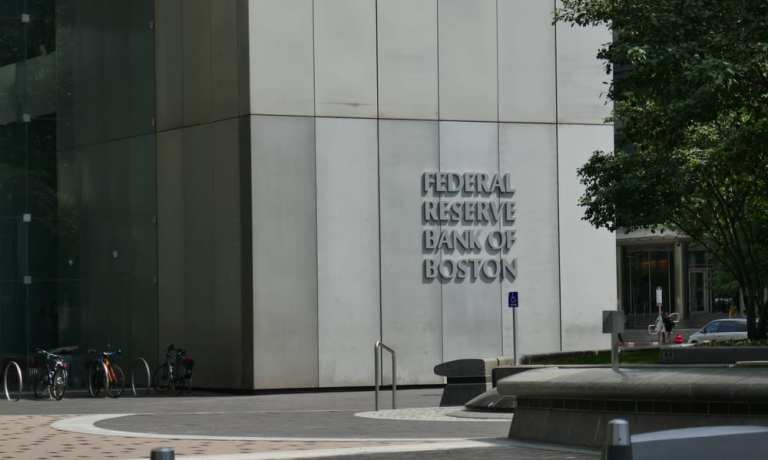Federal Reserve’s Cunha on the State (and Timeframe) of Digital Dollars

Digital dollars are a maybe – but if so, not for a while.
And there’ll be quite a bit of tinkering with the technology (especially the infrastructure) and the use cases to get there.
Earlier this month, as PYMNTS noted, the Federal Reserve said its Boston bank is working with the Massachusetts Institute of Technology (MIT) to explore the possibility of issuing digital currency.
Central bank digital currencies (or CBDCs) have been gathering steam, at least as a concept.
As many as 80 percent of the 66 central banks polled by the Bank of International Settlements said they were at some stage of CBDC development. China has been at the forefront of those efforts, at least as measured in terms of debuting an actual CBDC, and is in the midst of testing its digital yuan in various settings.
Jim Cunha, senior vice president, secure payments and fintech at the Federal Reserve Bank of Boston, told Karen Webster the joint efforts between the Fed and MIT are focused on exploring the infrastructure that would underpin a CBDC — and, at the same time, will probe various use cases.
No Race To Rollout
But a race to a rollout is not in the cards.
According to Cunha: “This is about experimenting for the purposes of educating ourselves, and making sure that we really understand what the fundamental technology can do. It’s not about going to production.”
Research into digital payments, of course, is nothing new for the Fed — and as Cunha offered by way of example, a few years ago his bank published research that found value in mobile payment tokenization.
This time around, the Fed/MIT efforts seek to expand the knowledge base being generated by those dozens of central bank CBDC programs across the globe — “so we’re part of a system to move the collective dialogue forward,” he said.
At a high level, most CBDCs can be issued in an environment where each country can “go it alone,” said Cunha, confining the digital coins to domestic use in a bid to (partially or completely) dislodge cash.
But CBDCs have potential in cross-border settings too, where instantaneous settlements can go a long way toward alleviating the high cost and opaque nature of multicurrency transactions that exist today.
Interoperability Is Key
To get there, interoperability is key, said Cunha.
He pointed to standards seen with ISO 20022 as a guidepost for such CBDC interplay — whether retail or wholesale payments are being coordinated (at present most central banks’ CBDC initiatives are focused on wholesale payments).
Thus far, he said other banks’ research has shown — and shared — insights on how to move money on one chain, and security on another, but ensure that payments are delivered.
The focus on wholesale payments may bring various retail use cases to reality — including stimulus and disbursement of government payments. Those use cases, of course, were floated earlier this year by various lawmakers as part of proposed legislation tied to stimulus spending as the pandemic hit.
“Anywhere where you have a cash transaction can be a possible use case,” Cunha told Webster, noting that such a wide net can help foster financial inclusion for the banked and unbanked populations.
The hardest part of gaining scale in digital offerings, whether through CBDC, blockchain or, say Libra, Webster observed, is getting people to change their behavior in the first place.
With a nod to some of the controversies surrounding CBDCs — after all, a central bank can conceivably track what you do with a digital unit of currency once it’s been issued — Cunha said that privacy remains among the most pressing concerns from both a technology and a policy perspective. The platforms underpinning CBDCs must be adaptable to address those concerns, he said.
One note of distinction: Cunha said exploration of CBDCs has nothing to do (yet) with FedNow, the instant payments initiative detailed in recent weeks by the Fed, which is eyeing a 2023-24 timeframe to launch.
“They have enough to do to launch their program,” he said, “and it may not be worth them thinking about out a [CBDC] design that may not happen down the road.” Conceivably, a CBDC may be interchangeable enough to port onto any number of other platforms, including FedNow, he said.
What’s Next
As for the road ahead: Cunha said that the goal for the joint Fed/MIT initiatives over the next six to nine months will be to have some fundamental tests done to see if a digital currency can actually be issued with speed, and throughput, with a robust level of privacy and cybersecurity in place.
There will eventually be published papers and open source code revealed along that journey, he said. Once that first layer is done the Fed will start to layer on different policy options, he said across two to three years.
Separate but parallel efforts by the Fed (but not with MIT) will involve technologists examining leading data platforms, winnowing them down and building testing infrastructure to measure those platforms across CBDC issuance throughput and resilience.
There may a sea change ahead for currencies as we know it — or it all may come to naught.
As Cunha told Webster of CBDC’s unknown potential (and challenges): “I don’t think we can truly understand what the power of some of these things can be until we start to move forward and the technology starts to evolve.”